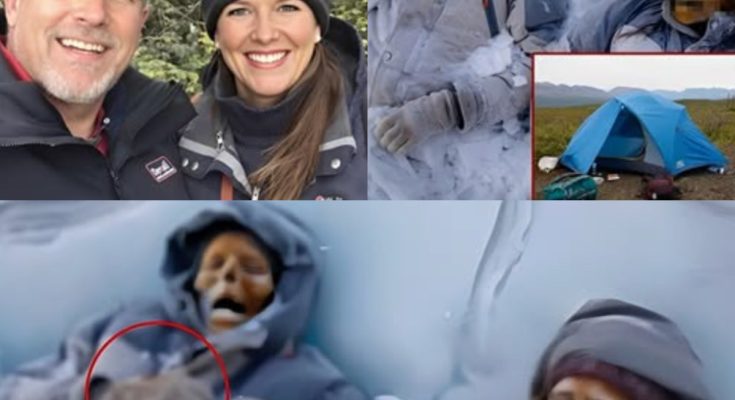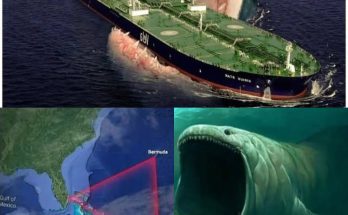The Desert That Hides More Than Sand
In the blistering heat of the Sonoran Desert, where the wind carries whispers across miles of barren land, mysteries have a way of lingering like mirages. But nothing could prepare two veteran explorers from Mexico City for the discovery that would rattle investigators, journalists, and conspiracy theorists across continents.

In the summer of 2017, a couple in their forties — seasoned adventurers with years of experience trekking the Sierra Tarahumara and the Lacandon Jungle — embarked on what they thought would be a ten-day survival expedition into one of North America’s harshest environments. Their equipment was impeccable: satellite phones, GPS beacons, military-grade maps, and a deep knowledge of the desert’s dangers.
Their route was meant to be straightforward — a low-traffic trail deep in the heart of Sonora. But instead of adventure, they stumbled into a nightmare.
The First Signs of Horror
On the third day of their journey, while crossing a dune valley lined with mesquite and ocotillo, the couple noticed something unnatural half-buried in the sand: what looked like a boot protruding from the ground. Approaching cautiously, they uncovered not an animal carcass or desert debris, but a human body, mummified by the arid climate.
The corpse was seated upright against a jagged rock, its skin leathery from dehydration, its clothing torn and scorched. But it wasn’t just the preservation that unsettled them. The body bore signs of deliberate mutilation — one eye had been violently gouged out.
Clutched in the desiccated hand was a tattered object: a Swedish passport.
The Passport That Opened Pandora’s Box
Authorities later confirmed the passport belonged to Lars Nyström, a 39-year-old Swedish national reported missing in 2012 while traveling through northern Mexico. His disappearance had drawn little international attention at the time — one of thousands lost along routes dominated by organized crime, human trafficking, and smuggling.

But the condition of his body suggested something far darker than an ordinary kidnapping gone wrong. Forensic experts noted that the missing eye seemed ritualistic, yet other evidence pointed away from any conventional cult or cartel execution.
Inside a weatherproof pouch near the corpse, investigators found fragments of handwritten notes in Swedish, Spanish, and broken English. Among the phrases:
-
“They follow me without faces.”
-
“Not cartel… something older.”
-
“If I die, it was not robbery.”
Media Frenzy: Ritual or Cover-Up?
The discovery ignited a storm in both Mexican and international media. Headlines screamed of “satanic rituals in the desert” and whispered about drug cartel experiments. On forums and social media, speculation ran wild:
-
Some claimed the gouged eye symbolized ancient indigenous rites linked to desert deities.
-
Others argued it was staged, a grotesque warning by smugglers to scare rivals.
-
A darker faction suggested government complicity — that Nyström had stumbled upon something forbidden, perhaps linked to military testing grounds scattered across Sonora.
What made the case even stranger was the lack of official transparency. Initial police statements promised “a full investigation,” but within weeks, reports slowed to a trickle. Local journalists complained of censorship and intimidation. One investigative reporter from Hermosillo told colleagues that men in unmarked trucks had parked outside his house after he began digging into the case.

The Desert’s Haunting History
To understand the enigma, some turned to the desert itself. The Sonoran Desert, stretching across Mexico and the United States, is not just a wilderness of sand and cactus. For centuries, it has been a crossroads of migration, commerce, and violence.
Historians note that indigenous groups once spoke of “shadow walkers” — spirits said to steal the sight of trespassers. Archaeologists have uncovered petroglyphs depicting figures with hollow eyes, carved into desert rock faces.
In modern times, the desert has become synonymous with narco-trafficking routes and disappearances. Tens of thousands of migrants attempting to cross north vanish every year, many never found. But the presence of a European traveler, mutilated in ritualistic fashion, clutching his own passport, was unprecedented.
Voices From Sweden
Back in Sweden, Nyström’s family was devastated but unsurprised. His sister, Anna, told reporters:
“We always feared Lars was caught in something bigger than himself. He loved travel, loved danger. But he also wrote strange emails before he vanished — about being watched, about people who didn’t speak but only stared.”
The Swedish Embassy in Mexico pressed for answers, but officials remained vague. The Mexican Attorney General’s office eventually declared the case “inconclusive,” citing lack of evidence.
The Conspiracy Deepens
Independent researchers refused to let the case die. In 2019, a leaked report from forensic specialists hinted at further anomalies:
-
Traces of radiation were found in Nyström’s clothing.
-
Sand samples near the body contained unusual metallic fragments.
-
GPS data suggested his last known location was near a restricted military testing area.
These findings fueled theories that Nyström’s death had less to do with cults or cartels and more with state secrets buried in the desert sands.
The Couple Who Found Him
The explorers who first uncovered the body rarely speak publicly. In one rare interview, they described the chilling silence of that discovery:
“The desert went quiet, even the wind stopped. We knew immediately this wasn’t just a tragedy. It felt… staged. Like he had been placed there to be found.”
They left the desert shaken, convinced that they were being followed during the remainder of their trip. At night, they claimed to see distant lights that vanished when approached.
A Truth More Terrifying Than Rituals
Today, the case of Lars Nyström remains unsolved — a chilling blend of fact, rumor, and speculation. Was he murdered by cartels experimenting with terror theatrics? Was he a victim of a forgotten indigenous ritual? Or, most disturbingly, did he stumble upon something hidden by the state — something so dangerous it had to be silenced?
As one Mexican journalist wrote:
“Perhaps the gouged eye is symbolic after all. Not of ritual sacrifice, but of what happens when you see something you were never meant to see.”
Conclusion: The Desert Keeps Its Secrets
The Sonoran Desert has always been a place of survival, where only the hardiest can endure its extremes. But it is also a place of disappearance — of secrets swallowed by sand.
For the Nyström family, closure remains elusive. For the explorers who found him, the memory haunts every journey. And for the rest of us, the mummified enigma of Sonora lingers like the desert wind: invisible, suffocating, and unforgettable.
One thing is certain: the truth behind Lars Nyström’s death is out there. But whether it is ritual, cartel, or something far darker, the desert isn’t giving up its answers easily.



